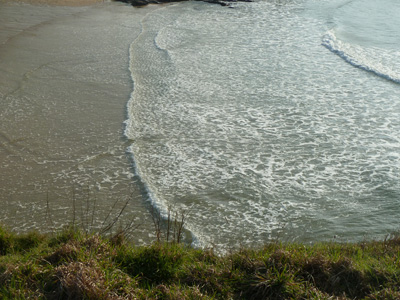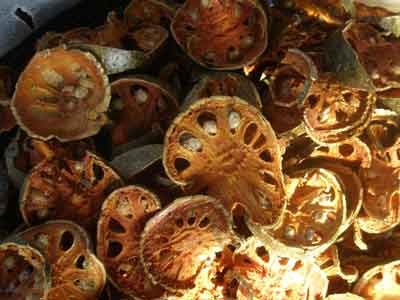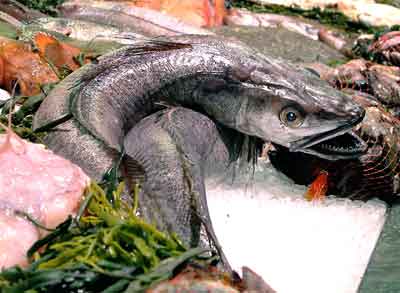A name in Mons for cougnou, a traditional Christmas yeast cake with raisins from Flanders, also available on St Martin’s day. Traditionally it is made in the shape of the baby Jesus. It is known by a variety of names throughout France and Belgium and decorated in different ways.

Caul fat. Pig’s membrane or caul, named after traditional lacy hat. This may be used to wrap chopped meats for cooking, as in certain sausages etc.

Bael fruit; a close relative of the citrus. The fruit is about the size of, and has the appearance of a greyish-yellow orange with a thin woody rind. The floury pulp is pale orange in colour and has numerous seeds. Dried slices are soaked and boiled and the resulting liquid sweetened and drunk. Used for medicinal purposes.
A clear liqueur flavoured with orange, made in Angers. It was formerly called triple sec white curaçao.

For this fish, I quote here in full the excellent letter of Brian Smith of Highcliffe in Dorset to the Guardian newspaper on Friday 10th April 2009: “We have frequently found confusion in France over what to ask for when buying hake. Ask for a ‘colin’ south of the Loire and they won’t know what you are talking about as they call it ‘merlu’. But north of the Loire, especially in Paris, it’s called ‘colin’. We are not alone in our confusion as Larousse (1961 edition) recognised the north-south divide, but quotes ‘merlan’ for the south, even though this is whiting. Keep up with me. Move on 10 years and Pamela Vandyke Price just recognises ‘colin’ as hake, in an otherwise remarkable useful “Eating and Drinking in France Today” (1971). Move on another 30 years and Alan Davidson’s “North Atlantic Seafood” (2003) uses ‘colin’ and ‘merlu’ correctly, but also adds to the confusion by calling pollack ‘colin; in northern France. I have never heard pollack called that name. Most fish shops’ best-selling fish is ‘lieu jaune’ (Pollack) and ‘lieu noir’ (coley) – and you’ll find great slabs of both in every supermarket in France.